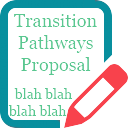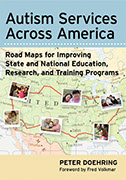Build on existing models and partner with existing agencies
September 23, 2016
 Once you have planted some guideposts, you can begin to consider how you might build on existing models for providing services, and how you might partner with existing programs already providing services. Some people are determined to develop new programs from scratch: perhaps they really do not believe that existing programs are effective, or they just really want to create something new. Other people simply want to adopt or replicate an existing program, perhaps impressed by their claims of success.
Once you have planted some guideposts, you can begin to consider how you might build on existing models for providing services, and how you might partner with existing programs already providing services. Some people are determined to develop new programs from scratch: perhaps they really do not believe that existing programs are effective, or they just really want to create something new. Other people simply want to adopt or replicate an existing program, perhaps impressed by their claims of success.
I learn from and build on existing programs whenever possible, once I have been able to identify the critical elements of these programs and review whatever claims of success have been made. This requires a careful deconstruction and analysis of the components I outlined in my 2013 Roadmaps book: which population the program targets (including co-occurring intellectual disabilities, and behavioral and mental health conditions), which outcomes it seeks to attain (i.e., health, education, community living, and so on), which elements it includes (services, training, research, policy), and what infrastructure (especially funding and staffing) it requires. The information gathered via this analysis will help to establish the "fit" with the core components and guideposts established and help to decide if it is desirable and feasible to build on existing models and partner with existing agencies.
Models
I use the term "models' here loosely, to include any program that potentially demonstrates how to achieve 2 or more of the outcomes in the population we had targeted. There was no single model or program that addressed all of the outcomes we were interested in. The summaries below were based on a detailed review of all materials related to the components outline above that we could access, and supplemented with extensive discussions that I had with program developers.
Not surprisingly, each of these "models" varied in significant ways. This was important because of earlier lessons I had learned about the need to carefully consider their infrastructure and potential bias in the outcomes reported based on the population they served. A careful assessment of the likely fit between population, methods, activities, settings, and staff needed for each track or curriculum area is essential to achieving the best outcomes and to begin to establish determinants of cost (Doehring, 2013).
ThinkCollege
 I found that ThinkCollege is not a specific, prescriptive model, but offered a general framework, useful resources, and a community of practice around which we might develop tracks relate to lifelong learning and a college program for persons with intellectual disabilities. I also felt that ThinkCollege affiliates in the region (like the DREAM partnership) could provide valuable consultation and direct support.
I found that ThinkCollege is not a specific, prescriptive model, but offered a general framework, useful resources, and a community of practice around which we might develop tracks relate to lifelong learning and a college program for persons with intellectual disabilities. I also felt that ThinkCollege affiliates in the region (like the DREAM partnership) could provide valuable consultation and direct support.
In the end, I recommended that we consider ourselves a ThinkCollege affiliate, but look beyond the ThinkCollege framework to achieve employment outcomes, to make programs accessible to families with limited resources, and to forge partnerships with public schools.
Project SEARCH
 I found Project SEARCH to be a very prescriptive and powerful approach to partner with public schools to achieve employment outcomes for students in their last year of high school. The new adaptations for students with ASD offered by NYC Collaborates for Autism were also interesting.
I found Project SEARCH to be a very prescriptive and powerful approach to partner with public schools to achieve employment outcomes for students in their last year of high school. The new adaptations for students with ASD offered by NYC Collaborates for Autism were also interesting.
While Project SEARCH offered a compelling, ready-made option for the first year of an employment-focused pathway based in one of Drexel's hospitals, I recommended, however, that we not seek to become a Project SEARCH site. My interests in creating internships based in the university, extending the employment support to a second year, and adapting parts of the Project Search curriculum to also fit the goals of students in a College Pathways proved to be incompatible with the goals established by the Project Search leadership team. The Project Search Team was also skeptical of the potential for university-based sites, because of inconsistent outcomes for previous attempts. Project SEARCH also charged a licensing fee for each new site, as well as annual fees. And a decision to embrace Project SEARCH precluded our ability to build on and further support emerging expertise in employment evident in our VR and public school parters, as well others in the region (like Autism Delaware's stellar POW&R program).
But perhaps the most important factor was that Project SEARCH has already been replicated at scores of program across the country. The benefits of simply creating another Project SEARCH site were unclear, and the amount of funding support we sought suggested we could be much more ambitious. Nonetheless, Drexel elected to adopt Project Search subsequent to my departure.
FirstPlace AZ
 I found FirstPlace Arizona to offer a compelling example of how a strong community presence can help a program to raise money and develop partnerships with employers for job training programs for transition-aged students. The Transition Academy itself also demonstrates how bundling employment and other training together with residential supports can put young adults on the path to independence, especially in an urban environment.
I found FirstPlace Arizona to offer a compelling example of how a strong community presence can help a program to raise money and develop partnerships with employers for job training programs for transition-aged students. The Transition Academy itself also demonstrates how bundling employment and other training together with residential supports can put young adults on the path to independence, especially in an urban environment.
I did not recommend that we seek to replicate the FirstPlace model, because I wanted to make our program accessible to a broad population by building a program around publicly funded services, as much as possible. I also wanted to demonstrate how a university-based program can take advantage of the natural peer community, provide an opportunity to directly influence how educators and clinicians are trained, and serve as an incubator for program development.
Agencies
I use the term "agencies' here to refer to any program already delivering services to the kinds of young adults we hoped we might help. My goal was to identify partners in the Philadelphia region who might directly provide services to our students as part of this program.
This kind of partnership is central to a collective impact approach, and essential to my long-term goals of replication, scalability and sustainability. Agencies that are larger and that have already demonstrated initiative in working with people with disabilities are better positioned to collaborate on a new venture.
Employers
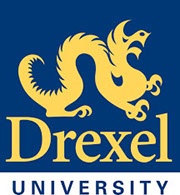 Both pathways - but especially the Work Pathway - depended on creating job internships and identifying permanent placements. We recognized that it would be easier to launch if we could cultivate a range of placement opportunities within one or two larger employers.
Both pathways - but especially the Work Pathway - depended on creating job internships and identifying permanent placements. We recognized that it would be easier to launch if we could cultivate a range of placement opportunities within one or two larger employers.
We quickly recognized that Drexel University itself offered the range of opportunities needed to serve as the primary placement, at least in an initial stage. That required that I begin to build bridges with Drexel 's department responsible for employees with disabilities.
Vocational Rehabilitation
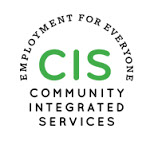 VR agencies were natural partners: they already employ staff providing job support and draw on public funds. I reached out to different providers to explore their interest in collaborating to provide direct job coaching, and ultimately recommended a partnership with Community Integrated Services or CIS. CIS was also a provider of independent living supports, which we hoped to explore as another possible source of staffing and public funding. CIS had monger been interested in creating job opportunities at Drexel.
VR agencies were natural partners: they already employ staff providing job support and draw on public funds. I reached out to different providers to explore their interest in collaborating to provide direct job coaching, and ultimately recommended a partnership with Community Integrated Services or CIS. CIS was also a provider of independent living supports, which we hoped to explore as another possible source of staffing and public funding. CIS had monger been interested in creating job opportunities at Drexel.
Schools
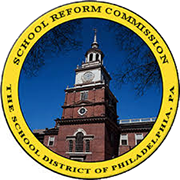 There were many possible benefits of a public school partnership: an existing pipeline of students , staffing, and funding; a chance to bridge high school and post high school programs; guaranteed access to students from low income families. Notwithstanding the potential benefits of a public school partnership discussed elsewhere (see Core Components), a partnership with a public school brings with it a heightened level accountability and transparency.
There were many possible benefits of a public school partnership: an existing pipeline of students , staffing, and funding; a chance to bridge high school and post high school programs; guaranteed access to students from low income families. Notwithstanding the potential benefits of a public school partnership discussed elsewhere (see Core Components), a partnership with a public school brings with it a heightened level accountability and transparency.
Nonetheless, my meetings with non-public high school programs in the region suggested that none were large enough to easily support 1-2 on-site classes or ensure a pipeline. I recommended seeking a partnership with the School District of Philadelphia.
Other Related Content
On this site
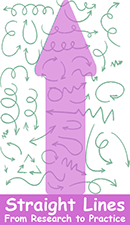 Barriers faced by under-served groups accessing new programs are well-established; include these groups from the start when testing a new service.
Barriers faced by under-served groups accessing new programs are well-established; include these groups from the start when testing a new service.
The barriers faced by traditionally under-served groups - like those from racial or ethnic minorities, and those living in poverty or in rural regions - are well documented. Children with ASD from these groups are more likely to be diagnosed later, and more likely to be first diagnosed with something else. These gaps persist throughout childhood, and recent re-analyses presented in the National Autism Indicators Report confirm that they persist into young adulthood.
These gaps magnify the delays translating research into practice and then into better outcomes. Research testing different strategies for improving access to new practices and programs is usually conducted in a second phase, if it is conducted at all. So new practices and programs often trickle down to people from under-served groups 5 years after other groups have benefited, if they trickled down at all.
So for the Transition Pathways Proposal, I recommended that we immediately target traditionally underserved groups. This choice influenced the development of the proposal from the start: we could not simply plan on parents paying the additional $5000 to $8000 that other programs charged. And the choice to partner with an urban school district introduced additional layers of oversight and approval.
X
My Presentations and Publications
 (2016). Incubating programs of services and training for people with develop-mental disabilities: A new partnership for UCEDDs, community-based providers, and philanthropists. Association of University Centers on Disability, Washington, DC.
(2016). Incubating programs of services and training for people with develop-mental disabilities: A new partnership for UCEDDs, community-based providers, and philanthropists. Association of University Centers on Disability, Washington, DC.
Guideposts
![]() Straight Lines To replicate a practice or program, consider `the infrastructure of funding, staffing, populations, curriculum, and settings
Straight Lines To replicate a practice or program, consider `the infrastructure of funding, staffing, populations, curriculum, and settings
![]() Straight Lines Barriers to accessing services are well-established: include under-served groups from the start when testing a new service
Straight Lines Barriers to accessing services are well-established: include under-served groups from the start when testing a new service
![]() Other Lessons A public mandate to provide services fundamentally changes the nature and trajectory of a program's growth and impact
Other Lessons A public mandate to provide services fundamentally changes the nature and trajectory of a program's growth and impact
![]() Other Lessons With long-term planning and support, a university can incubate new programs of services and training for the community
Other Lessons With long-term planning and support, a university can incubate new programs of services and training for the community
